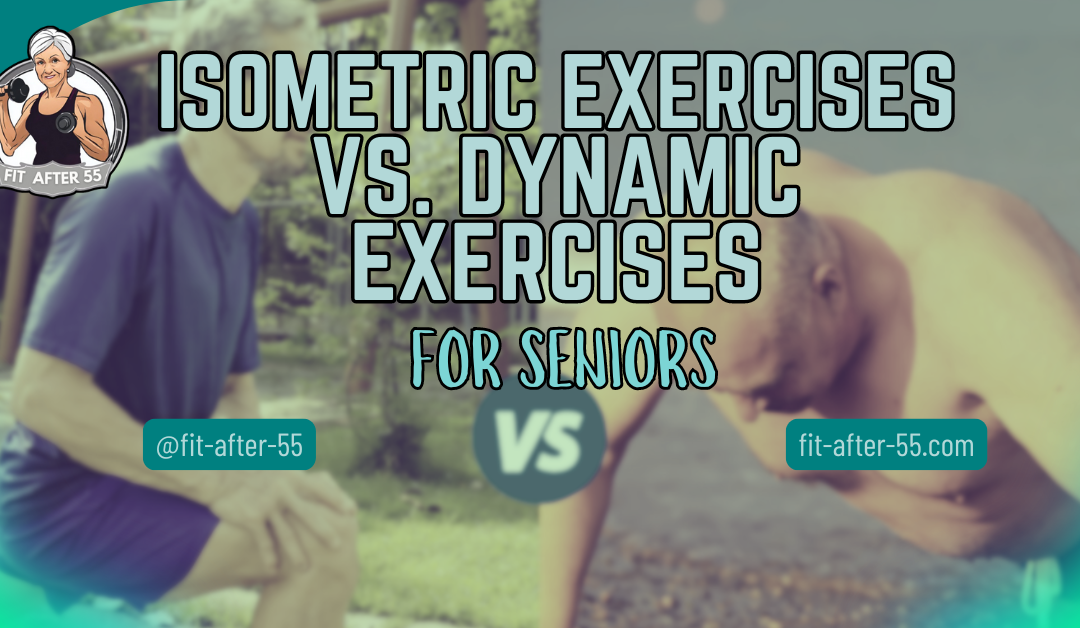When it comes to staying fit and active as we age, understanding the differences between Isometric Exercises vs. Dynamic Exercises for Seniors can make all the difference. Each type offers unique benefits, but which is best for improving strength, balance, and overall well-being? In this article, we’ll explore the key differences between these two exercise approaches, diving into their specific advantages and uncovering which might be the most effective for you. Whether new to fitness or looking to refine your routine, understanding how isometric and dynamic exercises compare could be the key to unlocking a healthier, more active lifestyle. Let’s dive in and find out which workout strategy suits your needs best!
Isometric Exercises vs. Dynamic Exercises for Seniors: Which is Better? A Friendly Guide to Safe and Effective Workouts for Older Adults
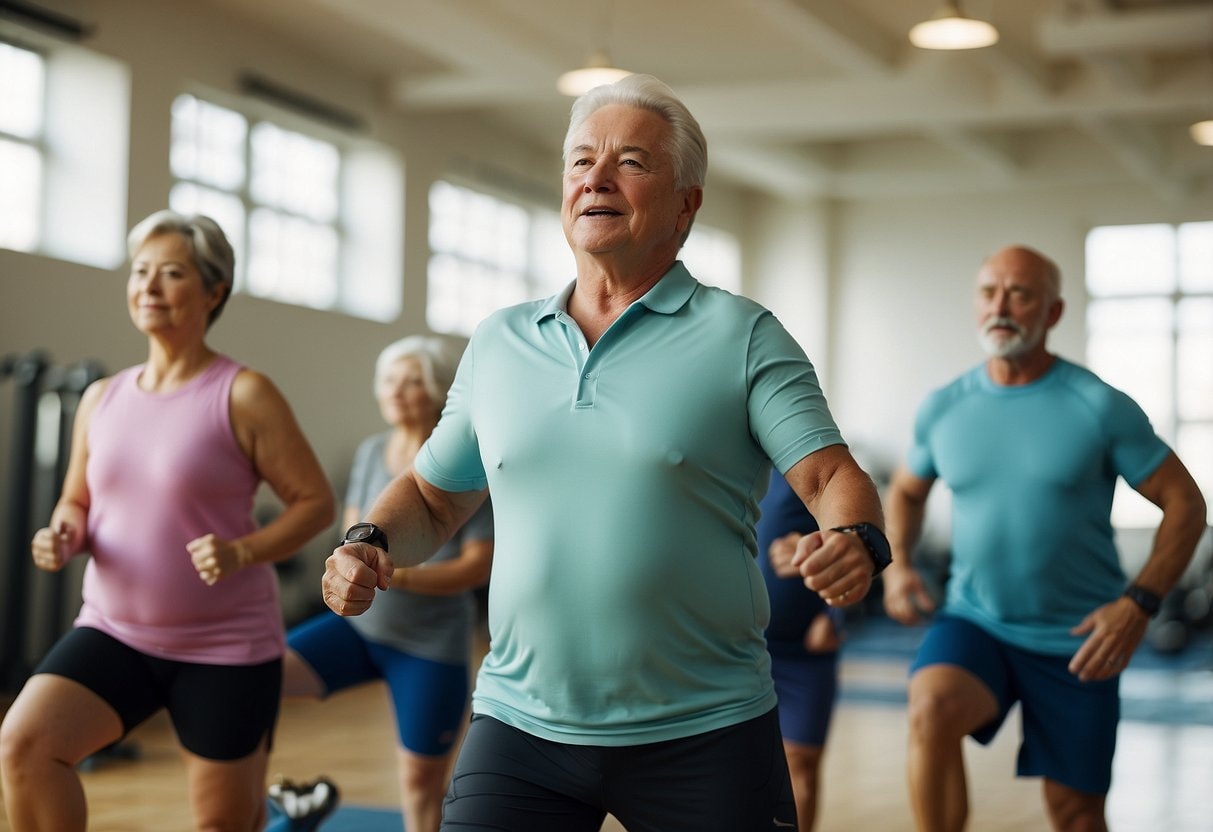
As we age, staying active becomes more important than ever. But what type of exercise is best for seniors? Both approaches offer distinct benefits in the debate of isometric exercises vs. dynamic exercises for seniors.
Isometric exercises involve holding a position without moving like planks or wall sits. These can be great for building strength and stability. On the other hand, dynamic exercises involve movement through a range of motion, like bicep curls or squats. Both isometric and dynamic exercises can benefit seniors, and the best choice depends on your individual needs and goals.
Isometric exercises might be a good starting point if you’re recovering from an injury or have limited mobility. They can help you build strength without putting too much stress on your joints. Dynamic exercises, however, can improve your overall fitness and help with everyday activities. The key is finding the right balance and mix of exercises that work best for you.
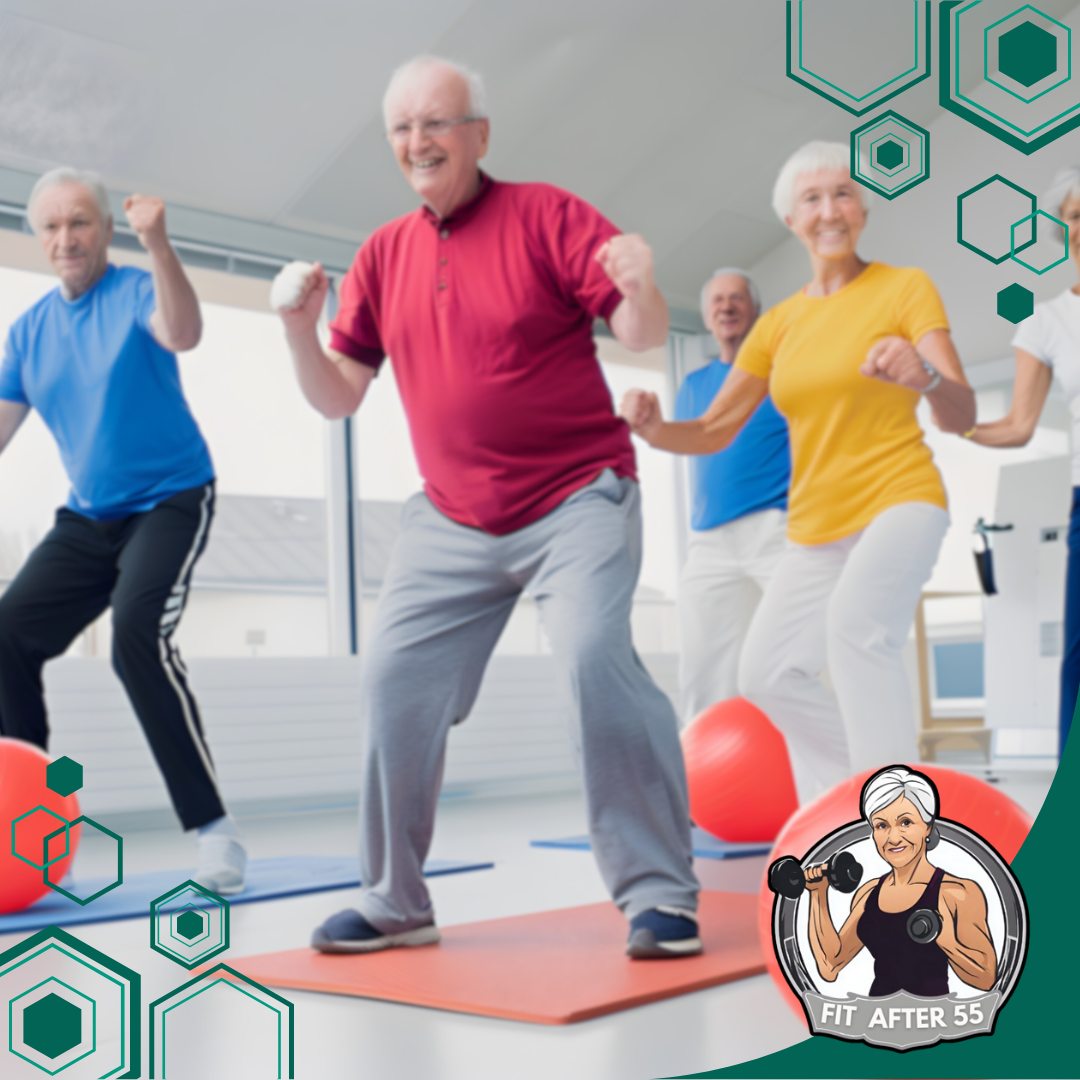
Key Takeaways
- Isometric exercises build strength and stability with minimal joint stress, making them ideal for seniors with joint issues or limited mobility.
- Dynamic exercises enhance cardiovascular health, flexibility, and coordination, improving overall fitness and reducing fall risk.
- Combining both isometric and dynamic exercises provides a well-rounded fitness routine, addressing different aspects of health and fitness.
- Dynamic exercises improve mobility and functional ability through movement, crucial for maintaining independence and performing daily activities.
- Seniors should start slowly and adapt exercises to their fitness levels. Consulting with healthcare professionals can ensure a safe and effective workout plan.
Understanding Exercise Types
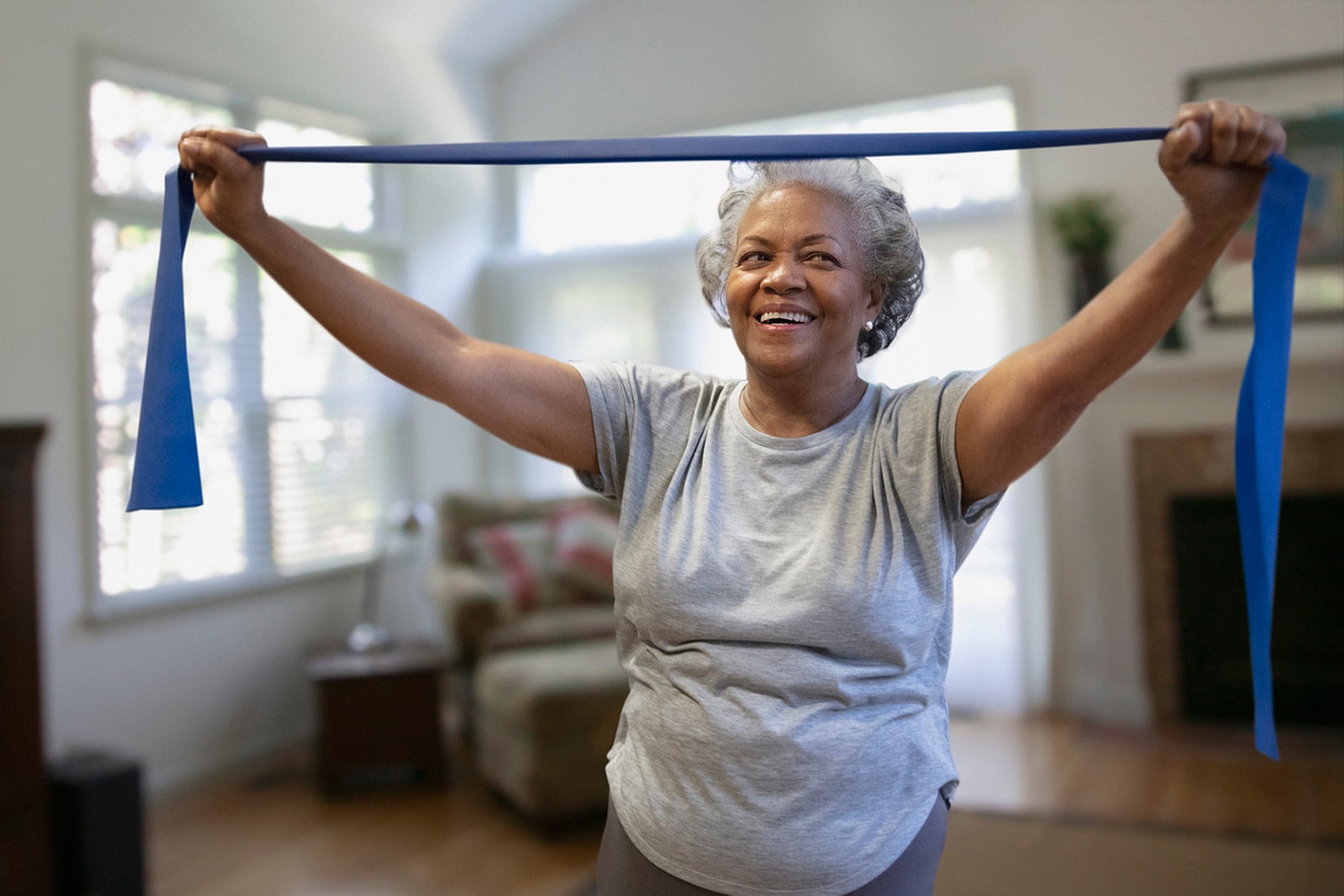
Exercises come in different forms, each with unique benefits for seniors. When considering isometric exercises vs. dynamic exercises for seniors, some focus on holding still, while others involve movement. Let’s look at two main types.
Defining Isometric Exercises
Isometric exercises involve muscle contractions without joint movement. You hold a position steady for a set time. This type of exercise is great for building strength and stability. Common isometric exercises include:
- Wall sits
- Planks
These exercises are good for seniors because they put less stress on joints. They can help improve balance and core strength. You can do them almost anywhere, with little or no equipment.
Exploring Dynamic Exercises
Dynamic exercises involve movement through a range of motion. These exercises can improve flexibility, coordination, and overall fitness. They often use more energy and can be better for heart health. Examples of dynamic exercises include:
- Walking
- Swimming
- Dancing
Dynamic exercises work muscles through their full range. This can lead to better muscle growth and function. They also help with everyday activities that require movement. For seniors, dynamic exercises can improve mobility and reduce the risk of falls. They’re also great for staying active and social, especially in group classes or activities.
Benefits of Isometric Exercises for Seniors
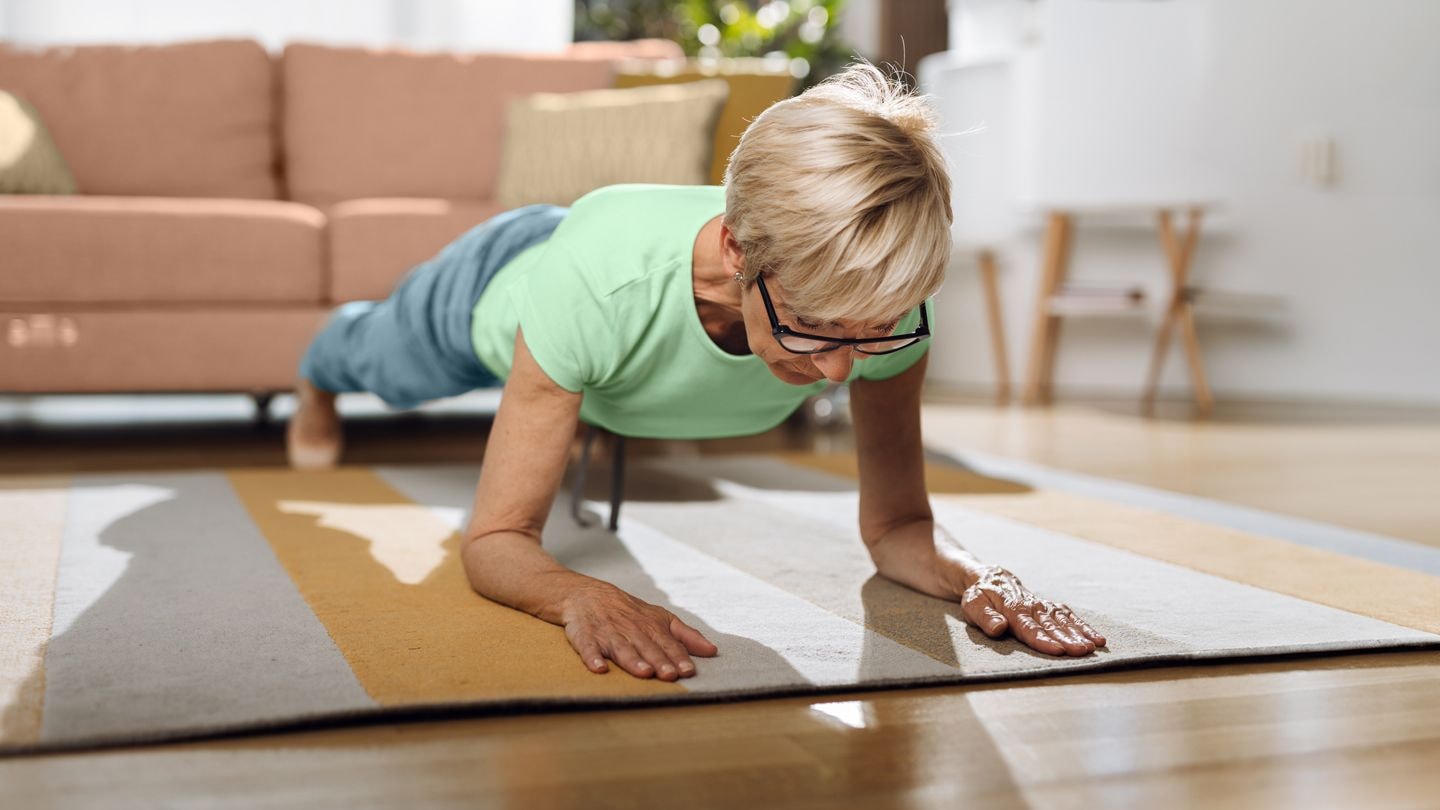
Isometric exercises vs. dynamic exercises for seniors can offer valuable benefits, but isometric exercises provide many advantages for older adults. They can help you stay strong and steady without putting too much stress on your body.
Improving Stability and Balance
Isometric moves can boost your balance and stability. When you do these exercises, you hold still in one position. This helps train your muscles to keep you steady. Try wall sits to work on balance. Stand with your back against a wall and slide down until your legs form a 90-degree angle.
Hold this pose for 30 seconds. This strengthens your leg muscles and improves your stability. Another good exercise is the plank. Get into a push-up position and hold it. This works your core muscles, which are key for balance.
Enhancing Muscle Strength, Tone, and Endurance
Isometric exercises can make your muscles stronger and more toned. They also build endurance so that you can do daily tasks more easily. Try isometric bicep curls to work your arms. Hold a weight in each hand and curl your arms halfway up.
Keep this position for 30 seconds. This targets your biceps without moving your joints. For your chest, do wall pushes. Stand facing a wall with your arms straight out. Push against the wall as hard as you can for 30 seconds. This works your chest muscles and arms.
Reducing the Risk of Falls and Injuries
Isometric exercises can lower your chance of falling or getting hurt. They strengthen your muscles and improve your balance, which helps keep you safe. The calf should be done to work on leg strength. Stand on one foot and lift your heel off the ground. Hold for 10 seconds, then switch feet. This makes your legs stronger and steadier.
Isometric exercises are also good if you have joint pain. They don’t put as much stress on your joints as other types of exercise. This means you can still build strength even with arthritis or other joint issues.
Advantages of Dynamic Exercises for Seniors
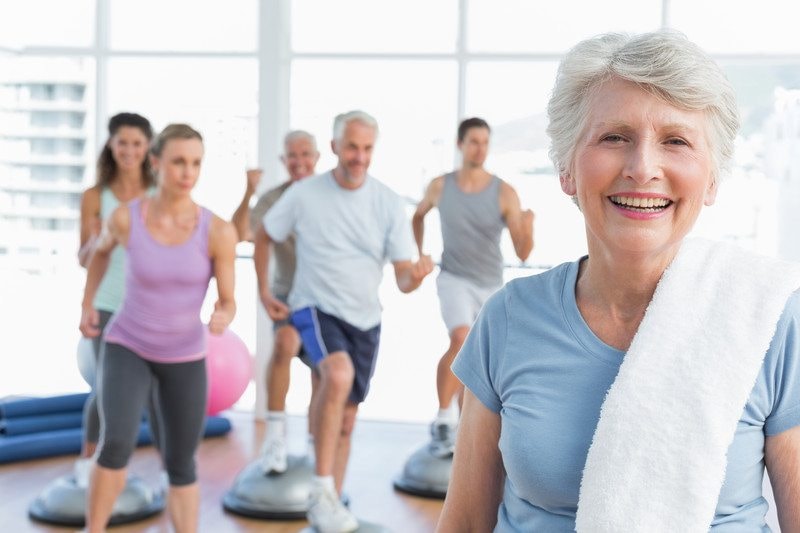
Dynamic exercises offer many benefits for older adults, but it’s important to consider how they compare to isometric exercises vs. dynamic exercises for seniors. Both types can help you stay active, healthy, and independent as you age, with dynamic exercises involving movement that improve your overall fitness in several ways.
Boosting Cardiovascular Health
Dynamic exercises can improve your heart health. When you do these exercises, your heart rate goes up. This makes your heart more muscular over time. Regular dynamic exercise can lower your blood pressure. It also helps reduce your risk of heart disease. You might find it easier to do daily tasks without getting out of breath. Some good dynamic exercises for heart health include:
- Walking
- Swimming
- Dancing
- Cycling
Do these activities for about 30 minutes daily, five days a week. Start slow and build up your stamina over time.
Promoting Mobility and Flexibility
Dynamic exercises can help you move more easily. They work your muscles through a full range of motion. This can make everyday activities like reaching for items or bending down easier. These exercises can improve your balance, too. Better balance means you’re less likely to fall. This is very important as you get older. Some dynamic exercises to try:
- Arm circles
- Leg swings
- Torso twists
- Walking lunges
Do these exercises slowly and carefully. Stop if you feel pain. It’s a good idea to warm up before you start.
Facilitating Joint Health and Function
Dynamic exercises can keep your joints healthy. When you move, your joints produce fluid. This fluid helps them work smoothly. Regular exercise can also strengthen the muscles around your joints. Strong muscles give your joints better support. This can help reduce pain from conditions like arthritis. Good dynamic exercises for joint health include:
- Gentle Yoga
- Tai chi
- Water aerobics
- Light resistance training
Start with exercises that feel comfortable. You can slowly increase the difficulty as you get stronger. Remember to listen to your body and not push too hard.
Isometric Vs. Dynamic Exercises
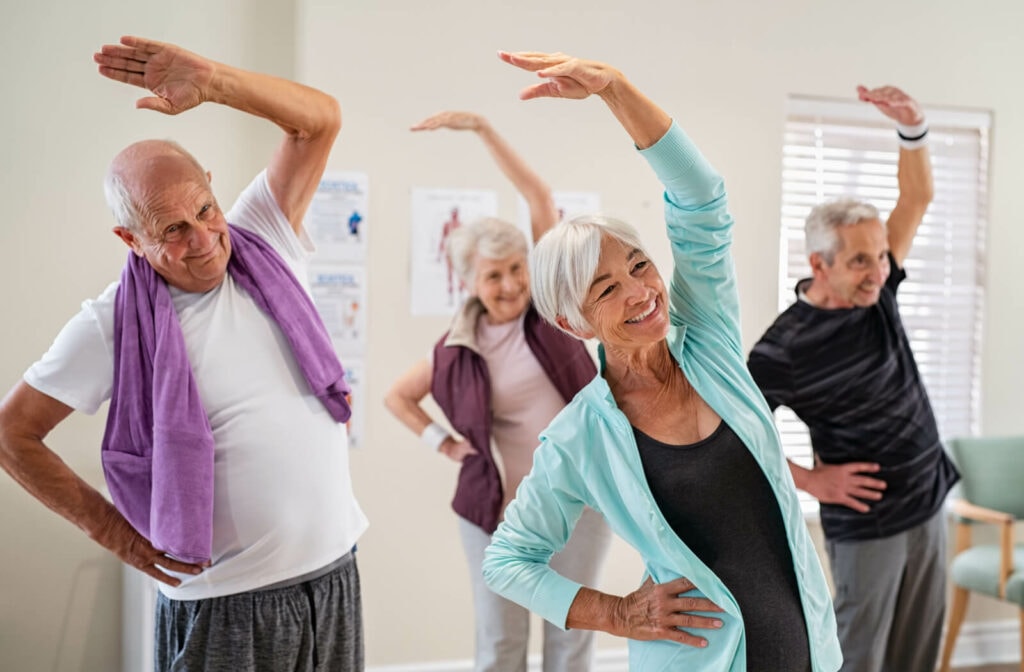
Isometric exercises vs. dynamic exercises for seniors offer different benefits. Each type has unique impacts on fitness, carries certain risks, and may be better suited for specific health conditions.
Comparing the Impact on Senior Fitness
Isometric exercises can help you strengthen specific muscle groups without moving your joints. These exercises are great for building muscle endurance and stability. On the other hand, dynamic exercises involve movement and can improve your overall fitness more comprehensively.
They can boost your cardiovascular health, muscle strength, and flexibility. For seniors, a mix of both types can be beneficial. Isometric exercises are good for maintaining stability in areas where movement might be limited. Dynamic exercises keep you active and help with daily tasks.
Analyzing the Risks and Considerations
Isometric exercises are often safer for seniors with joint issues. They put less stress on your joints and can be done safely, even with limited mobility. Dynamic exercises carry a higher risk of injury due to the movement involved.
But they also offer more benefits for overall health and function. When choosing between the two, consider your fitness level and any health issues you might have. Start slowly with either type and gradually increase intensity as you get stronger.
Assessing the Suitability for Different Health Conditions
For seniors with arthritis, isometric exercises can be a good starting point. They allow you to build strength without aggravating painful joints. If you have high blood pressure, isometric exercises help lower and control it. But always check with your doctor first.
Dynamic exercises are great if you’re looking to improve balance, coordination, and overall mobility. They can help prevent falls and keep you independent longer. For heart health, a mix of both types is ideal. Dynamic exercises boost cardiovascular fitness, while isometric moves can help strengthen your heart.
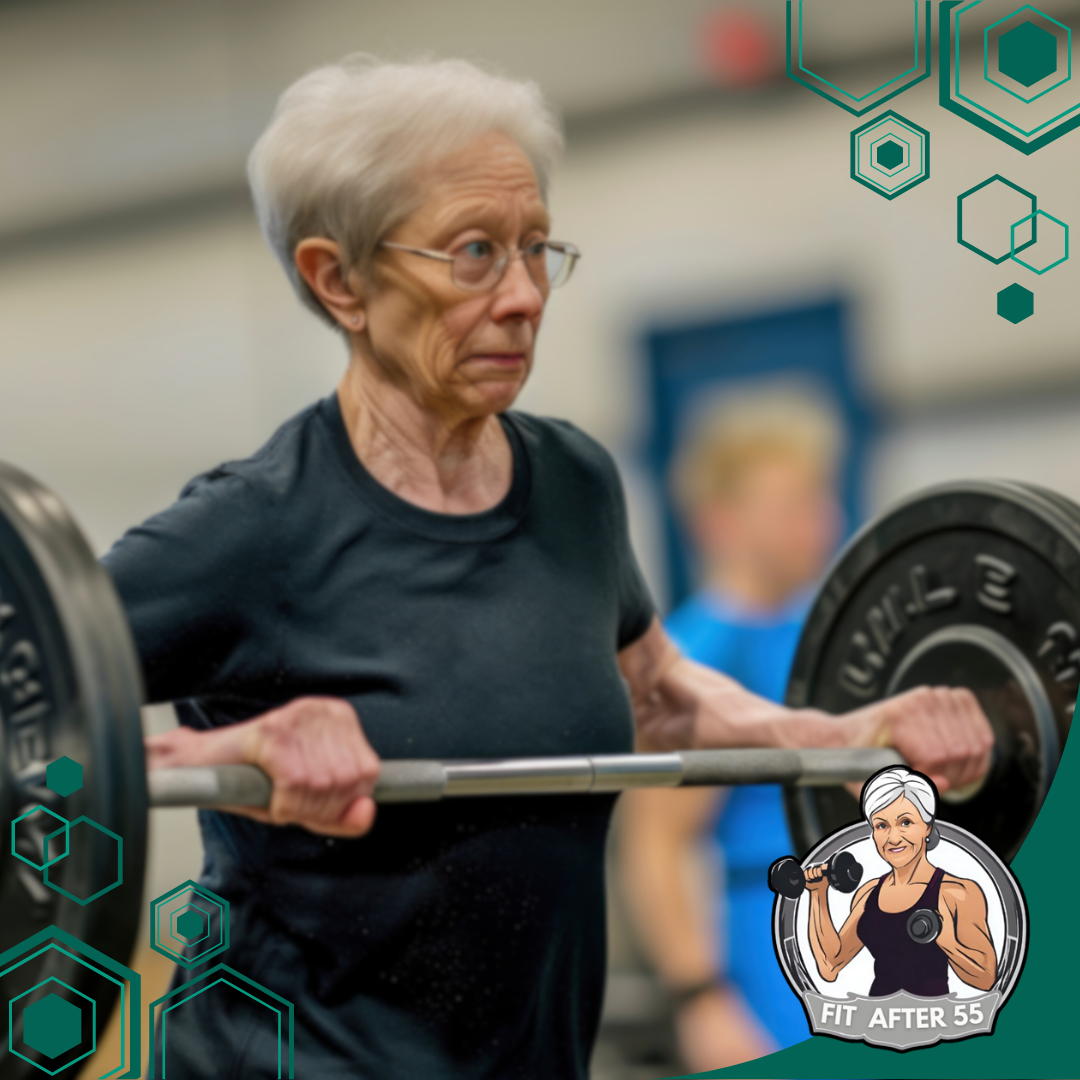
Did You Know?
Seniors should include both isometric and dynamic exercises in their fitness regimen 2-3 times a week. This frequency allows for adequate recovery time between workouts. Combining both types of exercises in a single session can provide a well-rounded workout. It’s important to start with short durations and gradually increase as strength and endurance build.
Practical Guidelines for Seniors
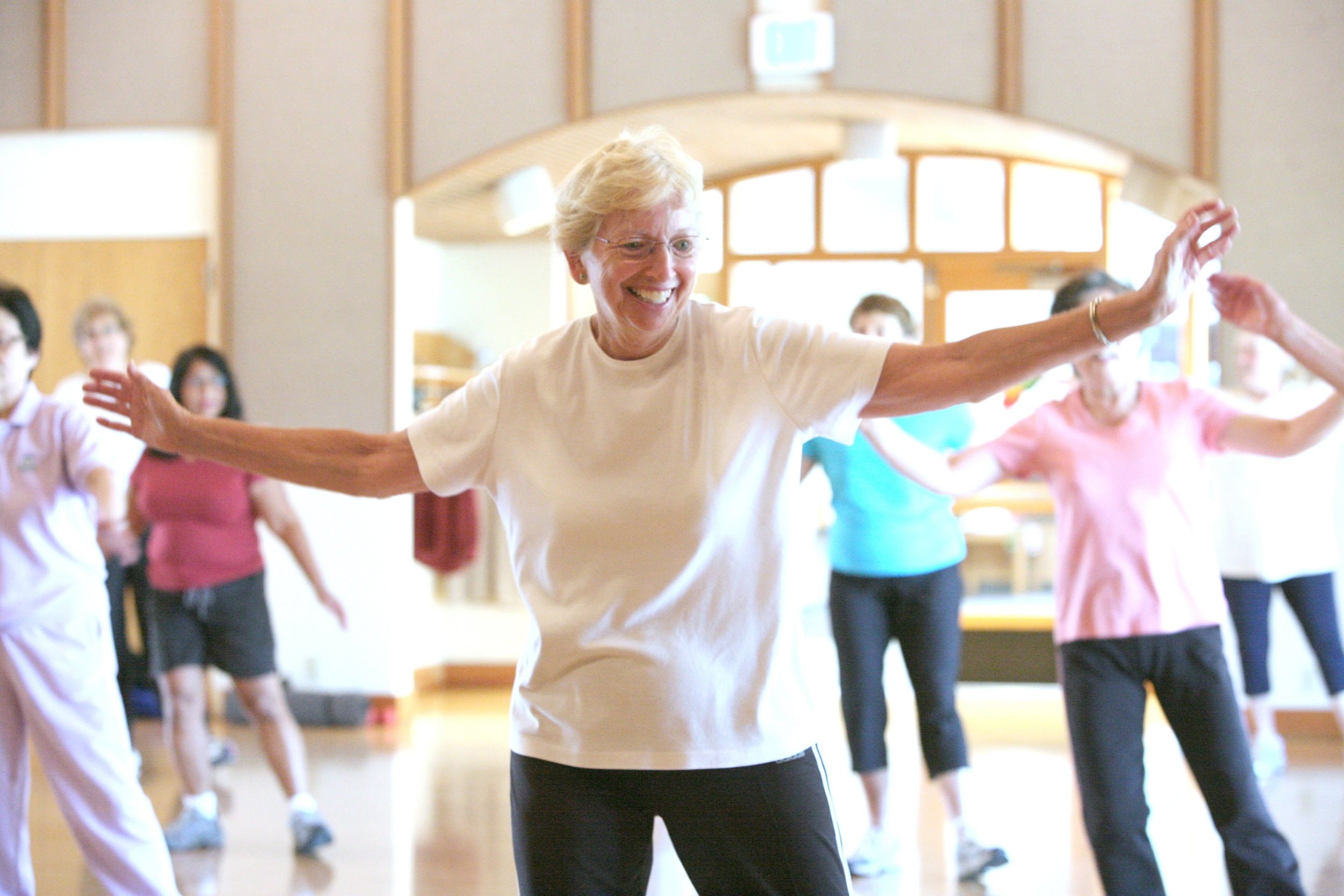
Staying active is key for seniors, and understanding the differences between isometric exercises vs. dynamic exercises for seniors can help you choose the best routine. A mix of exercises can boost health and fitness. Here are some tips to help you get started and stay safe.
Starting an Exercise Routine
Begin slow and easy. Talk to your doctor before starting any new workout plan. Pick activities you enjoy to stay motivated. Start with short sessions, like 5-10 minutes, a few times a day.
Aim for 3-5 days of exercise per week. Gradually increase time and effort as you get stronger. Try isometric exercises like wall sits or planks. These can help build strength without moving.
Set small, reachable goals. Celebrate your progress to stay on track. Remember, any movement is better than none.
Incorporating a Balance of Exercise Types
Mix up your routine for the best results. Include:
- Cardio: Walk, swim, or dance for heart health
- Strength: Use light weights or resistance bands
- Balance: Try tai chi or yoga to prevent falls
- Flexibility: Stretch daily to stay limber
Isometric exercises can be great for strength. Hold poses like wall pushes or doorway chest presses. Dynamic moves like arm circles or leg lifts are good too. Aim for 150 minutes of moderate activity each week. Split this into 10-15 minute chunks if needed. Add 2-3 strength sessions weekly.
Safety Tips and Precautions
Put safety first in your workouts. Wear comfy, sturdy shoes to avoid trips. Stay hydrated and listen to your body. Stop if you feel pain or are very out of breath. Start with no-weight isometrics if you’re new to exercise.
These are safer for beginners. Use a chair or wall for support in balance exercises. Warm up before and cool down after each session. This helps prevent injury. Exercise with a friend or in a class for safety and fun. Keep your doctor in the loop about your fitness routine.
Tailoring the Workout to Individual Needs

When choosing between isometric exercises vs. dynamic exercises for seniors, it’s important to consider your unique needs and goals. Your fitness level, health conditions, and personal preferences all play a role in creating the best workout plan for you. Isometric exercises might be a good starting point if you have joint issues.
These exercises put less stress on your joints while still helping to build strength. Dynamic exercises can be more beneficial for those looking to improve overall fitness and flexibility. They help with muscle endurance and cardiovascular health. Here’s a quick guide to help you decide:
- Isometric Exercises: Good for targeting specific muscle groups and joint stability
- Dynamic Exercises: Better for overall fitness and flexibility
Remember, you don’t have to choose just one type. Many seniors benefit from a mix of both isometric and dynamic exercises in their routine. Always listen to your body and start slowly. Stop the exercise and consult with your doctor or a fitness professional if you feel pain or discomfort.
Your workout should be enjoyable and suit your lifestyle. Try different exercises to find what works best for you. With the right mix, you’ll be on your way to improved strength and mobility in no time!
Professional Guidance and Resources
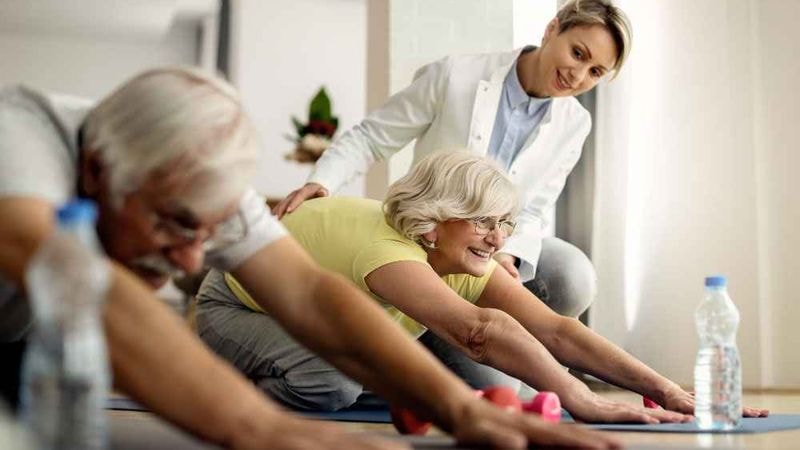
Starting an exercise program can be tricky, especially for seniors. It’s smart to get help from experts who know about fitness for older adults.
- Your doctor is a great place to start. They can check if you’re ready for exercise and suggest safe options for you.
- A physical therapist can teach you the proper form for isometric and dynamic exercises. They’ll help you avoid injury and get the most benefit.
- Many gyms offer senior fitness classes. These are led by trainers who understand older adults’ needs. They can show you how to do exercises correctly.
- Online resources can be helpful, too. Look for videos made for seniors by certified fitness pros. These can guide you through exercises at home.
- Local community centers often have exercise programs for older adults. These can be a fun way to stay active and meet new friends.
- Remember to listen to your body. If something hurts, stop and ask a pro for help. With the right guidance, you can find exercises that work for you.
- Feel free to try both isometric and dynamic exercises. A mix of both can give you a well-rounded workout.
- Always start slow and build up gradually. This helps prevent injury and makes exercise more enjoyable.
Check out this video on a 15-minute workout for seniors
By: National Institute on Aging
Finding the Right Balance: Isometric Exercises vs. Dynamic Exercises for Seniors
When comparing isometric exercises vs. dynamic exercises for seniors, it becomes evident that each type brings distinct advantages to a fitness routine. Isometric exercises build strength and stability with minimal stress on the joints, making them particularly beneficial for seniors dealing with joint issues or limited mobility. These exercises can effectively enhance muscle endurance and balance without requiring extensive movement.

Conversely, dynamic exercises improve overall cardiovascular health, flexibility, and functional mobility. They contribute to better heart health, increased flexibility, and improved coordination, which are essential for maintaining independence and reducing fall risk. Incorporating a balanced mix of both isometric and dynamic exercises into a fitness regimen allows seniors to enjoy a well-rounded approach to health and wellness, tailored to their individual needs and goals.
Frequently Asked Questions
What Are the Benefits of Incorporating Isometric Exercises Into a Senior's Workout Routine?
Isometric exercises can help seniors build strength without putting too much stress on their joints. These exercises are great for improving muscle endurance and stability. They can be done anywhere, making them convenient for seniors with limited mobility or space.
Can Dynamic Exercises Improve Mobility and Balance for Seniors Compared to Isometric Exercises?
Yes, dynamic exercises can be more effective for improving mobility and balance in seniors. They involve movement through a full range of motion, which helps maintain flexibility and coordination. Dynamic exercises also challenge your balance more, leading to better overall stability in daily activities.
Are There Specific Isometric Exercises That Are Particularly Beneficial for Seniors?
Wall sits, planks and static holds are excellent isometric exercises for seniors. These exercises target major muscle groups without putting excessive strain on joints. Isometric bicep curls and dead hangs can also be beneficial but should be done with caution and proper form.
How Do Dynamic Exercises Impact Cardiovascular Health in Seniors?
Dynamic exercises have a positive effect on cardiovascular health in seniors. They increase heart rate and improve circulation, boosting overall heart health. Regular dynamic exercises can help lower blood pressure and reduce the risk of heart disease in older adults.
What Precautions Should Seniors Consider When Engaging in Isometric Exercises?
Seniors should start slowly and listen to their bodies when doing isometric exercises. It’s important to maintain proper breathing throughout the exercise. Avoid holding isometric contractions for too long, as this can cause a sudden spike in blood pressure. If you have any health concerns, consult your doctor before starting a new exercise routine.
Stay Fit, Feel Fabulous: Join the Fit After 55 Community!
Discover a world of fitness inspiration at Fit After 55!
Our website (https://www.vitalityseniorliving.com/resources_for_senior/staying-fit-at-55/) is packed with engaging content, expert advice, and product reviews tailored for seniors. Connect with like-minded individuals who share your passion for staying active and healthy on our Facebook page (https://www.facebook.com/fitafter50dotcom/).
Let’s embark on this fitness journey together and prove that age is just a number!

